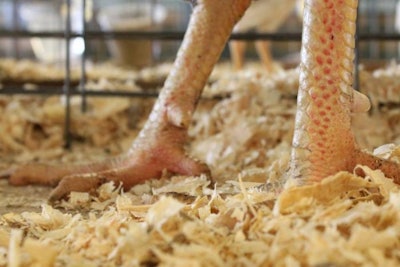
The identification of biomarkers for footpad lesion development and wound healing is helpful to understand the origin and progression of Footpad dermatitis (FPD). In order to locate these biomarkers, researchers from the University of Arkansas and Novus developed a model to induce high-incidence of moderate footpad lesions. A research study was then conducted with the ultimate goal of helping to develop strategies to prevent and intervene in FPD development and promote wound healing in commercial poultry operations.
The results showed a variety of biological parameters were interrelated in the process of wound healing and can be used as potential biomarkers for footpad lesion development and healing. This also pinpoints where to focus nutritional strategies that can directly impact these parameters to improve the health of footpads in birds.
Enhancing footpad health is often overlooked as a way to support improved animal welfare and profitability in poultry operations. This research with the University of Arkansas can help us better understand the pathology and etiology of FPD and find nutritional adjustment strategies to improve the bird’s skin integrity.
Read more to learn how to identify biomarkers for FPD and wound healing.

















